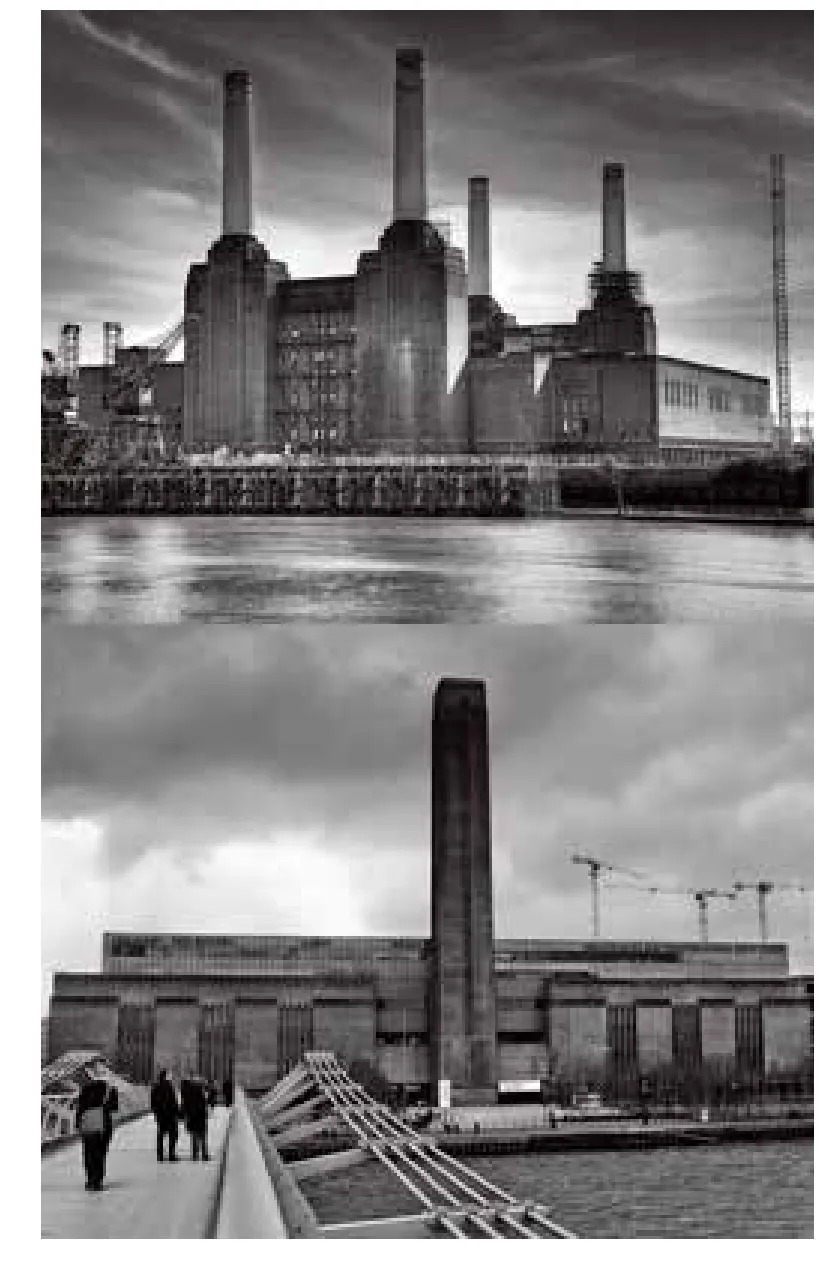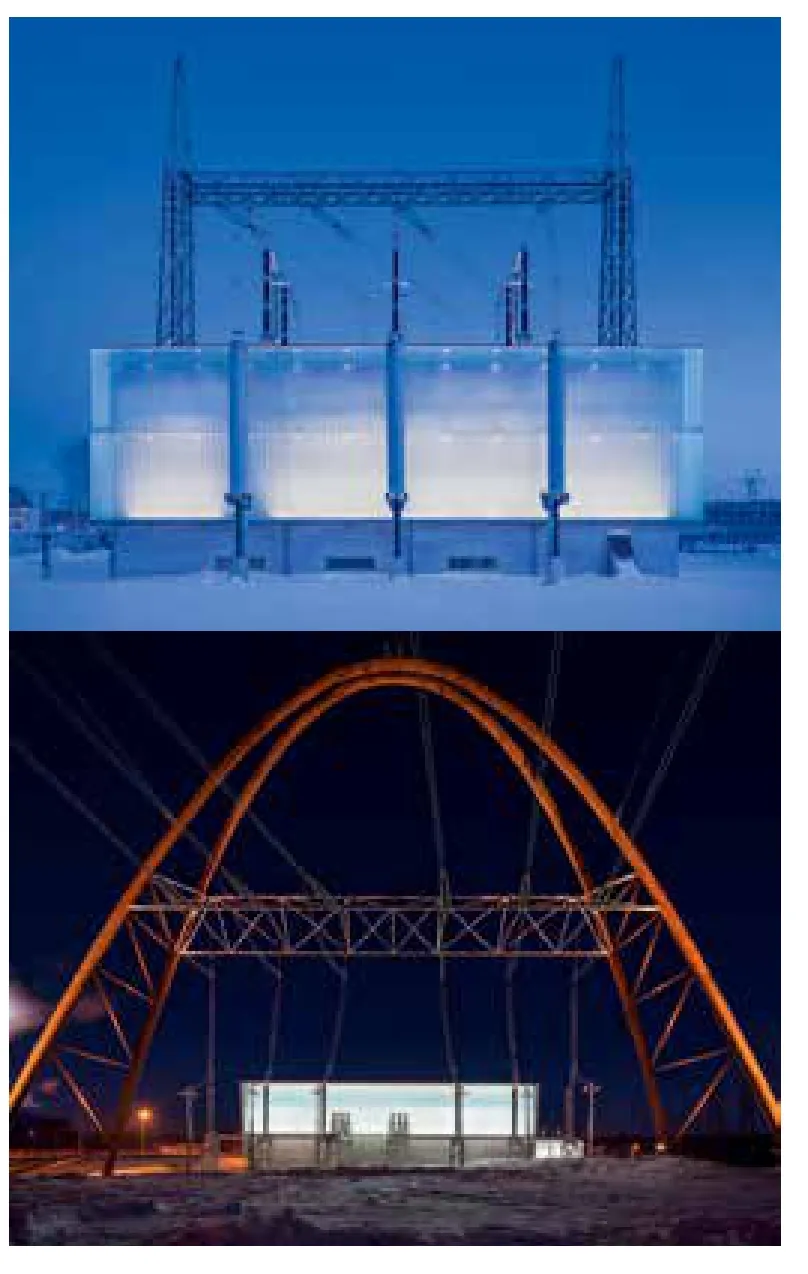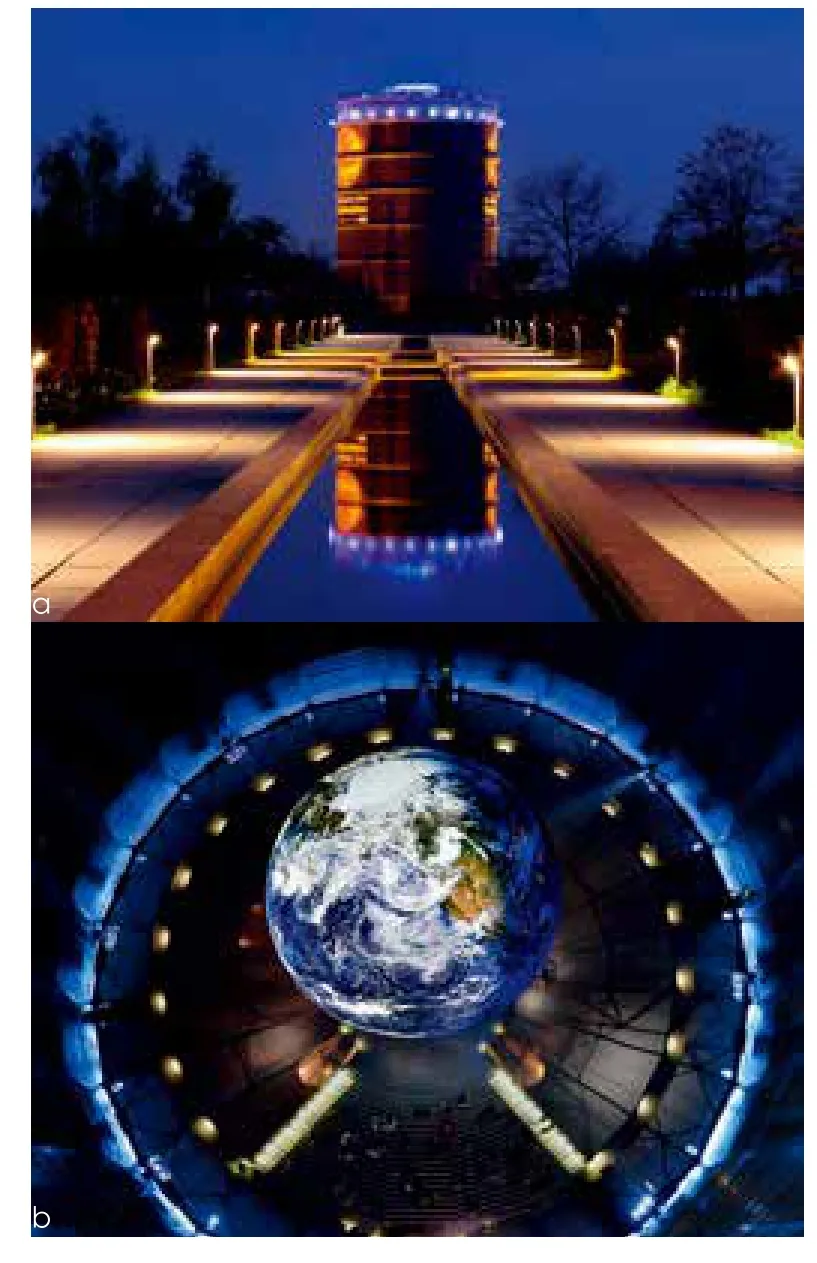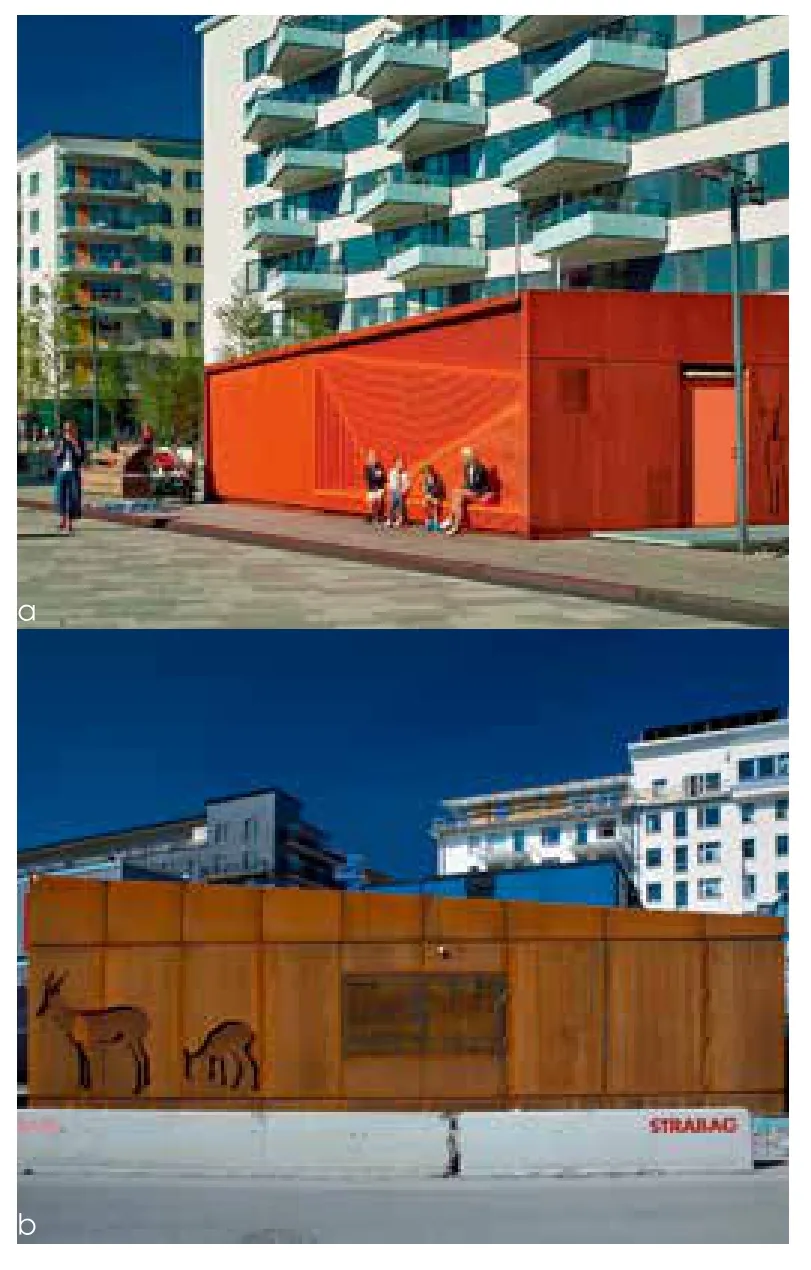能源基础设施城市化初探
刘志强 朱文一
能源(Energy)是人类发展过程中永恒的主题之一,是人类赖以生存的根本。三次技术革命无不伴随着主要能源角色的更替,其应运而生的能源基础设施(Energy Infrastructure)则成为城市正常运转的发动机,为城市提供生产、生活的保障。能源基础设施包括电力生产供应系统、燃气生产供应系统、供热生产供应系统以及其他四大类,四大类型中又可以分为发电设施、变电配电设施、输电设施、煤气站、天然气站、液化石油气站、燃气输送管道、供热站、供热输送管道、民用燃煤制品站等。
能源基础设施城市化(Energy Infrastructure Urbanism)(图1)是指随着城市的发展,原来的能源基础设施的使用状况发生改变,包括能源基础设施形式的变化和其使用功能的转变。大多数现存的能源基础设施是工业革命后才完成建设的,与水利基础设施相比,其历史相对较短,多数都不超过200年。随着能源获取技术和环境意识的提升,能源使用类型和方式也在发生转变。目前,有不少被淘汰的能源基础设施亟待改造利用;此外,随着城市的发展,部分能源基础设施也有着搬迁的诉求,而遗留的设备厂房也有着再利用的潜力,这两部分是能源基础设施城市化的动力源泉。
能源基础设施的建设目标相对单一,相较于交通基础设施和水利基础设施而言,其生产属性十分突出,所以,笼统来讲,我们可以简单地将其分为生产与运输两个环节,其对应的是各种类型的供能厂、站和输送设施。供能厂、站中的发电站、煤气站是能源基础设施城市化的主要内容,而液化石油气站和民用燃煤制品站则随着这些年能源结构的调整淡出了我们的视野。输送设施中的输配电设施是现阶段城市化的核心内容,输配电设施包括高压输电塔和配电站、变电站等构筑或建筑物。

图1 / Figure 1 Category of infrastructural urbanism of energy infrastructure能源基础设施城市化类别来源:作者自绘
发电厂(Power Plant)是指将自然界的各种能源转化为电能的工厂,按其能源来源类型可以分为水力发电厂、火力发电厂、垃圾发电厂、核能发电厂、太阳能发电厂、风能发电厂、地热发电厂、太空发电厂等。其类型的不同决定了每种发电厂的规模和设备的多样,但通常城市发电厂的规模较大。目前,比较常见的是火力发电厂和水力发电厂,这两者也是能源基础设施城市化的最主要内容,世界著名的巴特西发电厂(Battersea Power Station)(图2a)、泰特现代美术馆(The Tate Gallery of Modern Art)(图2b)均是此类电厂城市化的知名案例,由于这部分已经有学者进行过相关研究,笔者在此不再赘述。风能发电厂、太阳能发电厂等新型能源发电厂目前仍处于发展时期,可以预见的是,前者的风力发电机和后者的太阳能电池板等发电设施或许会成为这类电厂在城市化过程中的再利用重点,这是与现在以厂房空间再利用的水力及火力发电厂所不同的。地热发电厂则具有较强的地域性,同时,地热资源存在综合利用的潜力,是目前发电厂城市化过程中的一种新尝试。
史瓦特森格尼地热发电厂资源公园(Svartsengi Geothermal Power Station Resource Park)是地热发电厂城市化的典型。史瓦特森格尼地热发电厂位于冰岛的格林达维克,其创始人是Albert Albertsson。Albert之前是一位蒸汽动力学学者,他于1978年创立该电厂(以第一台汽轮机启动时间为准),这是世界上第一座可以同时供热供暖和发电的地热发电厂。事实上,冰岛人从1755年便开始了 以 Eggert Ólafsson 和 Bjarni Pálssson 为 先驱的对于地热资源的勘探,1930年开始在雷克雅未克(Laugardalur)钻探热水,地热被用来加热雷克雅未克东部的学校、医院、游泳池和60所房屋。1在1978年史瓦特森格尼地热发电厂建立后,发电厂开始排出废水,这些废水被排到附近的火山岩坑里,但废水与火山岩坑中的氧化硅发生反应,堵住了岩石的孔洞,使得废水无法被正常排出,进而形成了后来的蓝湖(Blue Lagoon)(图3a)。后来,Valur Margeirsson发现蓝湖中的水因含有大量矿物质,对于皮肤病患者具有很好的疗效,很多皮肤病患者靠在这里泡澡成功治愈了牛皮癣等皮肤病,所以,越来越多的人来到这里。1987年,蓝湖正式面向公众开放,随后这里配套建设了更衣室、康复理疗中心、皮肤病诊所、研发中心、酒店等设施,这里便成为了世界著名的旅游度假胜地。史瓦特森格尼地热发电厂的装机容量,也从1992年的50MW到2006年的145MW再到2008年的175MW。此外,史瓦特森格尼地热发电厂资源公园还利用地热发电厂的热能来干燥鱼产品。截至2013年,史瓦特森格尼地热发电厂资源公园的旅游业、能源生产和渔业的总产值为205亿冰岛克朗,占同年冰岛国内生产总值的1%。史瓦特森格尼地热发电厂资源公园(图3b)是地热电厂城市化的成功案例,其多元化综合利用资源的开发理念值得我们借鉴。
变电站(Converting Station)是指运输电流的过程中,接受电流并对电压和电流进行变换、分配的场所。变电站最初为露天式,随着电力系统的发展,变电站也出现了户内变电站和地下变电站,其占地面积也在逐渐缩小。目前,城市变电站较为常见的是户内型变电站,我国的户内型变电站通常由混凝土或木材建筑而成,现阶段更多的是关注其功能性,即为放置在内的变电设备提供遮蔽,对于变电站的形式关注较少,缺乏地域性考量。在行业标准的规定范围内,多数的变电站仅仅满足了标准的底线,但作为城市中数量众多的构筑或建筑物,随着城市的发展,其自身也具有城市化的需求,这也为建筑师的介入提供了可能。
位于芬兰万塔(Vanda)的Länsisalmi 电站(Länsisalmi Power Station)是建筑师介入变电站设计的优秀案例之一。该电站位于较为明显的公路转角处,是一处400KV的变电站的扩建和更新。Parviainen Architects事务所认为光是电的视觉表现形式,所以这一变电站的主要理念便在于“光”的设计,他们对旧的主变压器外墙进行了更新,拆除了旧的控制建筑和开放式工厂,主变压器建筑的下部采用天然混凝土,上部采用了半透明的玻璃,玻璃类型与配电行业广泛使用的釉绝缘子相呼应,内部设置有照明,在夜晚点亮时,变电站像一个灯笼,这与传统的变电站灰暗、峻冷的形象截然不同(图4a)。其他设施则位于变电站主变压器建筑的南侧,高拱形景观门户由直径800mm的Cortene钢管制成(图4b),拱门型的设施同样经过精心的照明设计,在夜晚,Cortene的天然和温暖的锈色与其他立面材料和谐共鸣。整组设施用建筑的语言表达了看不见摸不着的“电”这一主题,对于变电站城市化十分具有启发性。
输电铁塔(Transmission Tower)是输配电过程中架空电缆电线的支撑点,因架设回路数量的不同,又可以分为单回路输电塔和双回路输电塔,前者指一个负荷有一个供电电源的回路,后者是指一个负荷有两个供电电源的回路。输电铁塔通常为高耸的构筑物,一般可达十几米到几十米不等,每隔一定间距需设置一个。所以,输电铁塔本身就具有一定的景观性,高压走廊内的铁塔具有很强的秩序感,若设计得当,可以成为城市中和城市间的一条景观带。目前,我国的输电铁塔基础常用的结构形式有独立基础、扩大基础和桩基础,所使用的材料较为单一,基本以Q235和Q345热轧角钢为主,与发达国家相比,强度较低,但随着我国电力行业的发展,土地资源的日益紧缺和环保行业的要求逐渐提高,可以预见,我国的输电铁塔设计将逐渐与国际接轨,而这一过程我们则可以视其为输电铁塔的城市化。
设计型输电塔(The Design Pylon)(图5a)是由BYSTRUP设计的一款面向未来的输电铁塔。2设计型输电塔适用于功率为400KV、330KV和132KV的输电线路,其高度为100英尺(约合31m),所使用的材料为热浸镀锌钢轴和不锈钢(前者用于大部分杆体,后者用于格子头)。 设计型输电塔的基础为单桩基础,安装较为简便。设计型输电塔的总体策略是减少景观中的视觉侵扰。塔架被简化为几个简单的元素,塔头构造为焊接在一起的不锈钢管的格子结构,不锈钢金银丝头与天空融为一体,节省材料的同时看上去简洁轻盈。设计型输电塔在2001年由Energinet.dk3组织的国际比赛中获得一等奖。目前,该塔已在丹麦27公里的线路上成功安装并通电。另一款由Zwarts & Jansma Architects事务所设计的输电塔被称为低磁场高压塔(High Voltage Pylons)(图5b)则体现了功能与形式相结合的思维。在形式方面,此种输电塔的设计摒弃了传统桁架式输电塔复杂的结构,采用现代设计语言和简单的形式,由两个细长的高57m的塔架构成,塔架采用S355钢,根据荷兰天空最常见的颜色,塔架被涂成浅灰色,这使得塔架可以融入景观。在功能方面,与现有的格子塔相比,低磁场高压塔两级的导体彼此相邻悬挂,线束距离较近,此种设计降低了沿高压连接路径产生的磁场强度。目前,欧洲第一个跨境传输系统运营商TenneT已经在沿着A12高速公路从海牙到高达的路段中采用了低磁场高压塔,由于塔的形式和功能俱佳,其低磁场的特性有利于健康,所以获得了周围居民的好评。
煤气厂(Gas Plant)是指经营煤气生产的企业,顾名思义,煤气是指以煤为原料加工制得的可燃气体。20世纪80、90年代时,我国几乎每家每户均使用煤气罐作为烹饪和洗浴的能源来源。然而,进入21世纪后,民用燃气大部分改用液化石油气,居民使用煤气的数量大大降低,煤气逐渐淡出民用市场。在国外,这一进程更早,所以,由于煤气的产能过剩,国内外均出现了很多废弃的煤气厂。煤气厂的特征之一是具有巨大的煤气储气罐,而这些煤气储气罐成为煤气厂改造过程中的重点。
位于德国奥伯豪森的煤气厂在20世纪90年代进行改造,它被改造为奥伯豪森展览馆(图6a),而展览馆的核心便是原本奥伯豪森煤气厂的储气罐,该储气罐高117.5m、直径67.6m,相较于传统展览馆而言,这样完整的圆柱形通高大空间为艺术家们策划展览提供了新的可能,原本受制于展览空间的想象力随着储气罐被改造为展览馆而得到了解放,这里成为了艺术家们争先恐后进行先锋展览的场所(图6b),催生了规模、形式完全不同于以往的各式展览。此外,117.5m高的储气罐是城市的制高点,在奥伯豪森展览馆顶层可以俯瞰整座城市。如今,奥伯豪森展览馆成为了德国鲁尔区奥伯豪森小城的标志,这座号称欧洲最大的煤气罐每年吸引大约40万游客参观,成为奥伯豪森小城重要的旅游景点,也是鲁尔区工业文化路线25个“锚点”之一及欧洲工业遗产路线中德国境内的一站4。
配电箱(Distribution Box)是指为城市配电设施所设计制作的箱柜。相较于具有升压降压功能的变电站,负责控制、分配和保护电力的配电箱规模通常较小。综合式的变电站有时也含有配电功能,由于其规模通常较大,所以,城市中并不常见;而配电箱则是城市中最为常见的基础设施之一。在进行城市美化活动中,原本并不美观而又数量众多的配电箱成为了不可忽视的元素。

图2 / Figure 2 a. 巴特西发电厂 / b. 泰特现代美术馆a: Battersea Power Station / b: The Tate Gallery of Modern Art来源:a. https://www.goodfon.com/wallpaper/liesthru-a-lens-photography-5425.html, b. http://blog.sina.cn/dpool/blog/s/blog_8a89690a0101h4t5.html

图3 / Figure 3 a. 史瓦特森格尼地热发电厂“蓝湖” / b. 史瓦特森格尼地热发电厂资源公园a: Blue Lagoon / b: Svartsengi Geothermal Power Station Resource Park来源:a. http://www.privatehire.is/wp-content/uploa ds/2015/09/9647874918_21cdc5218a_k.jpg,. b. http://media.gettyimages.com/photos/geothermal-powerplant-svartsengi-the-blue-lagoon-grindavik-icelandpicture-id128892367
瑞典技术配电箱(Technical Building)(图7a)是小型配电箱城市化的作品,这个由U.D.Urban Design AB事务所设计的位于斯德哥尔摩的配电箱,采用了柯尔顿钢板和木条板的双层结构,木条板形成一个长条形的板凳面向广场,而另一侧立面则可以用激光雕刻机在柯尔顿钢板上雕刻出麋鹿等与城市主题相应的图形(图7b)。此外,配电箱外还装有电子显示屏,可以看到城市的用电情况。一系列的设计都旨在增强配电箱的公共属性,使得原本不受居民关注的配电设施融入城市,走进居民的生活。

图4 / Figure 4 a. Länsisalmi 电站 / b. Länsisalmi 电站输电塔a. Länsisalmi Power Station / b. Pylon of Länsisalmi Power Station来源:http://www.parviainenark. fi/case/ fingrid/
能源基础设施的城市化相较于交通和水利基础设施而言,在规模上并不突出。但是,能源厂、站类建筑的城市化在我国已经如火如荼地进行。而能源基础设施在国外也已悄然开始,危机倒逼改革,在能源危机的背景下,能源行业也必然迎来新一轮的革命浪潮,电动汽车、量子能技术、太空发电……未来,能源革命必然将加速能源基础设施的城市化。

图5 / Figure 5 a.设计型输电塔 / b. 低磁场高压塔a. The Design Pylon / b. High Voltage Pylons来源:a. https://www.powerpylons.com/t-pylon, b.https://www.zja.nl/en/Wintrackmasten

图6 / Figure 6 a. 奥伯豪森煤气厂展览馆 / b. 奥伯豪森展览馆展会a. Gasometer Oberhausen / b. Exhibition in Gasometer Oberhausen来源:a. http://ferienwohnung-oberhausen-lirich.de/wp-content/uploads/2014/12/gasometer-oberhausen.jpg, b. https://www.dlr.de/dlr/Portaldata/1/Resources/portal_bilder/2016/2016_1/S145_TWF0703PK5a_Copy_Gasometer_Oberhausen_xl.jpg

图7 / Figure 7 a. 技术配电箱 / b. 柯尔顿钢板a. Technical Building / b. Corten Steel来源:a. https://www.en.urbandesign.se/energy, b. https://www.en.urbandesign.se/energy
注释
Notes
1 根据Svartsengi Geothermal Power Station Resource Park官方网站https://www.resourcepark.is/history/中的关于该发电厂的历史资料整理。
2 BYSTRUP是丹麦一家专注于设计输电铁塔的电力铁塔设计公司,公司的理念之一是“Power Pylon of the Future-delivered today”。
3 Energinet.dk为丹麦电力公司,其职能类似于我们的国家电网,公司负责丹麦电力和燃气的传输和供应。
4 根据文章《德国,不能拆掉的旧工厂》一文整理得来。详细可参见:https://www.xzbu.com/1/view-5538645.htm。
SYNOPSIS
A Study on the Infrastructural Urbanism of Energy Infrastructure
LIU Zhiqiang, ZHU Wenyi
Energy is one of the eternal themes in the development of human beings and the basis for human survival. The three technological revolutions are accompanied by the upgrading of major energy. The energy infrastructure, which came into being, has become the engine of normal operation of the city,providing production and living guarantee for the city. Energy infrastructure includes power production supply system, gas production supply system, heating production supply system and others. The four types can be divided into power generation facilities, substation distribution facilities, transmission facilities,gas stations, natural gas stations, LPG stations, gas transmission pipelines, heating stations, heating pipelines, civil coal products stations, etc.
Energy infrastructure urbanism refers to with the development of cities, there are changes in the use of the energy infrastructure, including changes in the form of energy infrastructure and changes in its use. Most of the energy infrastructure was built after the Industrial Revolution, and its history is relatively short compared to water infrastructure, most of which are less than 200 years old. With the improvement of energy acquisition technology and environmental awareness, the types and methods of energy use are also changing. At present, many energy infrastructures that have been eliminated need to be transformed and utilized. In addition, with the development of cities,some energy infrastructures also have the need for relocation. The legacy of the equipment factory has the potential to reuse. These two parts are the source of power for the urbanization of energy infrastructure.
The construction goal of energy infrastructure is relatively simple. Compared with transportation infrastructure and water infrastructure, its production attributes are prominent. Therefore, in general terms,we can simply divide it into two parts: production and transportation. Power plants and gas stations are the main contents of the urbanization of energy infrastructure, while the LPG stations and civil coalfired products stations have already faded out of our view with the adjustment of energy structure in these years. The transmission and distribution facilities in the transportation facilities are the core content of the current urbanization. The transmission and distribution facilities include transmission tower, converting station and other structures or buildings.
Power plant is a factory that converts energy from nature into electricity. According to their energy source types, they can be divided into hydroelectric power plants, thermal power plants, garbage power plants,nuclear power plants, solar power plants, wind power plants, geothermal power plants, and space power plants.The Svartsengi Geothermal Power Station Resource Park is typical of geothermal power plants.After the establishment of the Swarts Genni geothermal power plant in 1978, the power plant began to discharge wastewater, which was discharged into the attached volcanic rock pit, but the wastewater reacted with the silica in the volcanic rock pit, blocking the pores of the rock, making The wastewater could not be discharged normally, which formed the later Blue Lagoon(Figure 3).Later, Valur Margeirsson discovered that the water in the Blue Lake contains a lot of minerals, which is very effective for patients with skin diseases. In 1987, Blue Lagoon was officially opened to the public. Then, it built a locker room, rehabilitation physiotherapy center, dermatology clinic, research and development center, hotel and other facilities, it becomes a world-famous tourist resort.
A converting station is a place where a current is received or is converted and distributed during a process of transporting.The Länsisalmi Converting Station in Vanda, Finland is one of the best examples of converting station design by architects. The converting station is located at a relatively obvious road corner and is a renewal of a 400 KV converting station. Parviainen Architects believes that light is a visual representation of electricity, so the main idea of this converting station is about the design of “light”.They updated the old main transformer exterior wall and removed the old control building. The lower part of the main transformer building is made of natural concrete, and the upper part is made of translucent glass. The interior is provided with illumination.When the night is lit, the converting station is like a lantern, which is different from the impressions of the gloomy and cold of traditional converting station(Figure 4).
The transmission tower is the support point for overhead cables and wires during transmission and distribution.The Design Pylon (Figure 5) is a future-oriented transmission tower designed by BYSTRUP.The Design Pylon is suitable for power transmission lines of 400 KV, 330 KV and 132 KV. Its height is 100 feet (about 31 meters). The tower is simplified into a few simple elements and the tower head is constructed as a lattice structure of welded stainless steel tubes. The stainless steel filigree head is integrated with the sky to save material while looking simple and light. Another transmission tower designed by Zwarts & Jansma Architects, called High Voltage Pylons, re flects the combination offunction and form.The design of such a transmission tower abandons the complicated structure of the traditional truss-type transmission tower, and adopts a modern design language. According to the most common colors of the sky, the tower is painted in light grey, which allows the tower to blend into the landscape. In terms offunction, compared with the existing lattice tower,the two-stage conductors of the low- field high-voltage tower are suspended adjacent to each other, and the harness distance is relatively close. This design reduces the strength of the magnetic field generated along the high-voltage connection path.
The gas plant in Oberhausen, Germany, was remodeled in the 1990s and was transformed into the Oberhausen exhibition hall, and the core of the exhibition hall was the original Oberhausen gas plant. The gas tank is 117.5 meters high and 67.6 meters in diameter.Compared with the traditional exhibition hall, such a complete cylindrical high space provides a new possibility for artists to plan exhibitions. (Figure 6).
The Swedish Technical Building (Figure 7) is the urbanization of a small distribution box. This distribution box in Stockholm, designed by U.D. Urban Design AB, uses a double-layer structure of Corlton steel and wood slats, which form a long bench facing the square, while the other side can be laser engraved on the Kelton steel plate. A figure corresponding to the urban theme such as the elk is engraved on it.
The urbanization of energy infrastructure is not as prominent in scale as it is in transportation and water infrastructure. However, the urbanization of power plants and station buildings is already in full swing in China and the energy infrastructure has quietly begun in foreign countries. The crisis has forced reforms. In the context of the energy crisis, the energy industry is bound to usher in new a round of revolutionary waves, electric vehicles, quantum energy technology,space power generation... In the future, the energy revolution will inevitably accelerate the urbanization of energy infrastructure.

